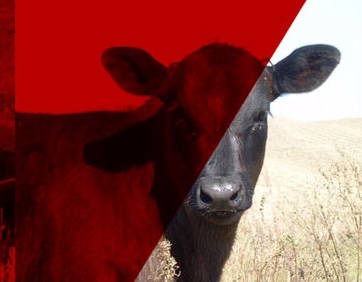Every year brings its own weather challenges in Nebraska, and late summer and early fall of 2025 have been no exception. Early-planted corn was harvested in late September and early October, some of the earliest harvest dates in recent memory. Favorable late-summer rains and warm temperatures provided the “right” combination for excellent regrowth in bromegrass pastures. However, these same conditions also led to widespread germination and sprouting of corn kernels in harvested fields.
While a few sprouted kernels are common every year, this fall many early-harvested fields have dense green growth of sprouted corn plants ranging from 3 inches to more than a foot tall. The following management tips can help producers safely and effectively graze corn residue fields with significant sprouting.
Management Tips for Grazing Corn Fields with Sprouted Corn
Assess Ear Drop and Residue Conditions
- Before turning cows out, walk the field to estimate ear drop per acre. If there are more than 15 ears total in three 100-ft rows, management to reduce grain intake is needed.
- See Frequently Asked Questions About Grazing Corn Residue Fields with Excessive Downed Corn.
Recognize the Risk of Nitrates in Sprouted Corn
Sprouting is common, but this year’s extensive regrowth increases potential risk.
- Collect representative samples and test for nitrate concentration before grazing.
- Sample fields separately (irrigated vs. dryland) and from various random locations.
- Clip plants at ground level, placing small plants (≤8 in.) in one plastic bag and taller plants (>8 in.) in another.
- Remove air, seal, freeze, and send promptly to a commercial forage laboratory for analysis.
Dealing with Nitrates
- Lush, high-quality forages such as these corn sprouts are typically lower risk of toxicity than hay but can still be toxic, careful management is essential. See Reducing Nitrate Concerns When Grazing Forage Cover Crops.
- Adapt cows gradually by limiting initial access or feeding a palatable feed source to reduce intake of high nitrate corn sprouts.
- Providing energy (grain) can help reduce risk; fields with moderate ear drop may be safer than those with only scattered kernels since cows will preferentially eat ears.
- Fill cows up before grazing. Even if nitrate levels are low, ensure cows are not hungry when turned out. Feed hay first to prevent rapid consumption of sprouts.
- Remember that freezing temperatures do not reduce nitrate levels in plants.
Time Turnout Carefully. Turn cows out after noon, once they have eaten hay. This timing allows observation during daylight hours and reduces risk of overconsumption.
Key Takeaway
With more sprouted corn than usual in 2025, it’s essential to evaluate fields before grazing, test for nitrates, and manage turnout carefully. These steps will help minimize risk while making effective use of valuable fall residue.

